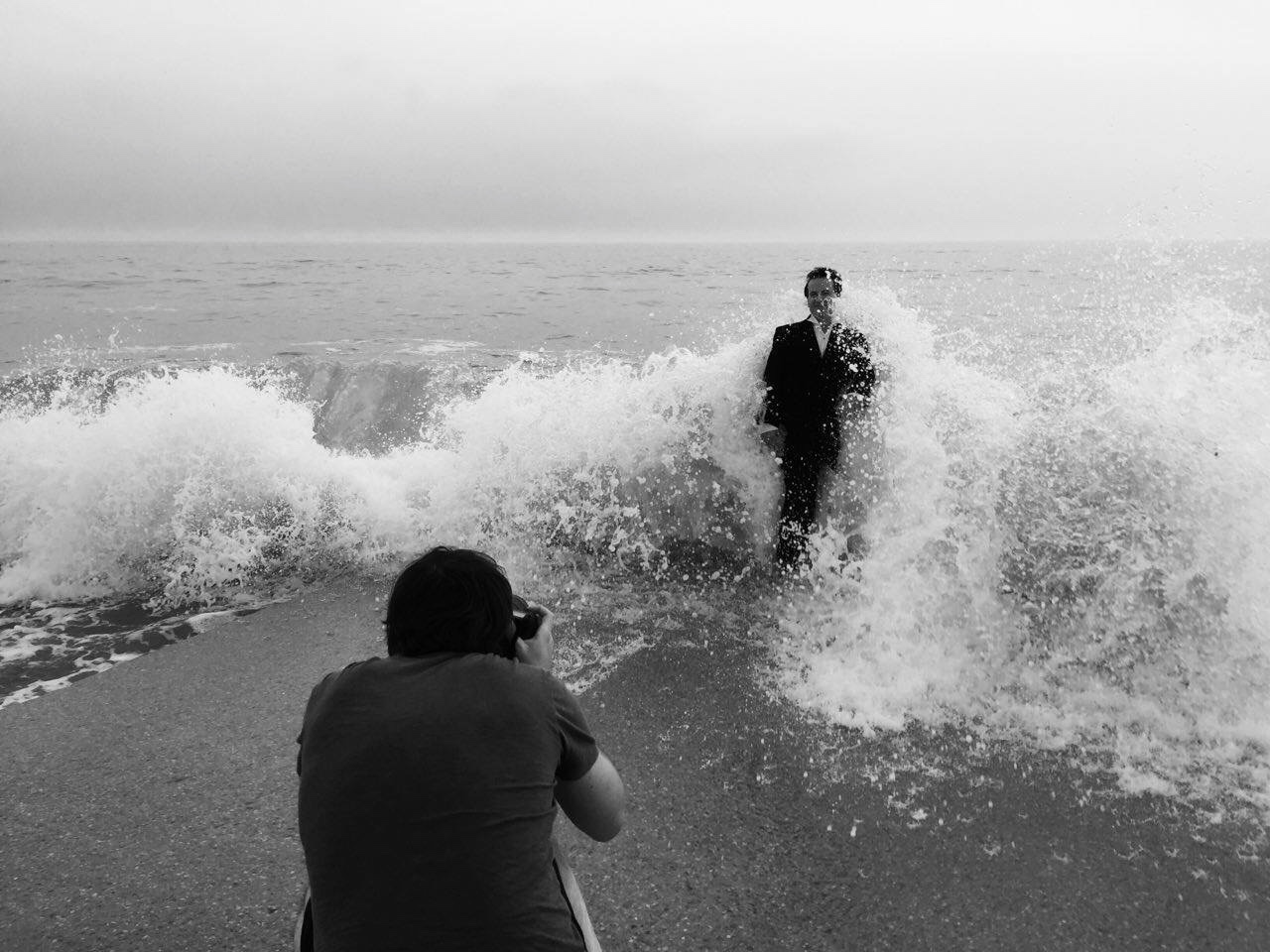‘Just walk two steps further back into the water!’ insisted the refreshingly creative, gifted and more-than-slightly eccentric Odradek photographer, Tommaso Tuzj.
‘No, no.’ I smiled. ‘The next wave will push me over and this will finish the entire photo session!’
‘Go back! Go back!’ I took one step. One was enough. After what must have been the fifth wave crashing against my back, I did in fact hit the ground. Onlookers applauded happily… but this was not the average performance. I survived, the tuxedo survived, and Tommaso had his photograph.
The concept of comparing Bach with the sea, or the ocean, has its origin in the famous quote of Beethoven regarding the etymology of Bach’s name. ‘Nicht Bach, sondern Meer sollte er heißen…’ ‘His name should not be called Bach [Brook] but Meer [Sea].’ My experience of Bach’s music has not been unlike this memorable photo session. There I was fully dressed in concert wear, confronted by the force of the sea and witnessing its power, beauty and depth. It swept me off my feet. However with Bach to be utterly engulfed is absolutely essential, and my lifetime musical pursuit has been the acquisition of a state of involvement where I can, indeed, be fully immersed and yet breathing, spending many hours freely exploring without hindrance.
Just as there are a multitude of different and contrasting seascapes, there is likewise much varying imagery which parallels the breadth of Bach’s output. Perhaps the scene may be like that of my album photograph: powerful, sombre, dramatic, and yet with a glowing warmth. Or it may be something with greater brilliance and radiance. Just as any beautiful seascape has immediate appeal, Bach’s music can yield much enjoyment even with a casual, more distant familiarity. But walk into the water and one is quickly aware of the strength of the current. Bach’s music has a power that potentially overwhelms and draws the listener into its vortex.
Now dive below the surface. Witness the hidden depths. Witness the contrapuntal interplay and interdependence of a multitude of living organisms, living and breathing musical notes, the individual beauty of each being enhanced by the presence of the whole. Travel further beyond and experience even greater depths, representing the most profound musical utterances. Perhaps frequenting such terrain may present a certain vulnerability, but one is always conscious of the unending rewards of such experiences.
Whatever one’s personal journey with Bach, there is always the element of refreshment. Many have testified to his music’s restorative, consoling and even analeptic properties. Sea air is charged with beneficial negative hydrogen ions, and more mysteriously, air which is saturated with the sound of Bach’s music can be utterly invigorating, releasing endorphins and promoting wellbeing.
The seas and oceans are no respecters of nations. They join the masses of land which divides. The universality of music is something we all share, and Bach’s music has reached countless people globally across many generations. He would be astonished if he knew how greatly he is appreciated and loved so many years after his death.
‘Furthermore the spiritual message of the music is for all people. The motto Soli Deo Gloria is something Bach embraced, and he openly shared this desire that his music glorify God and therefore serve a higher purpose which could benefit all.

Here, then, is a miniature portrait of Bach, the sea. Every individual can create many such portraits of their own. And what of you? What are your aesthetic perspectives? Are you someone who loves being beside the seaside? Or are you a long distance swimmer? Or a diver? Do you prefer to set sail? Or perhaps cruise? Whatever you are and wherever you are, allow your innate musical instincts to be your navigator, directing you to ever new and uncharted joys.

